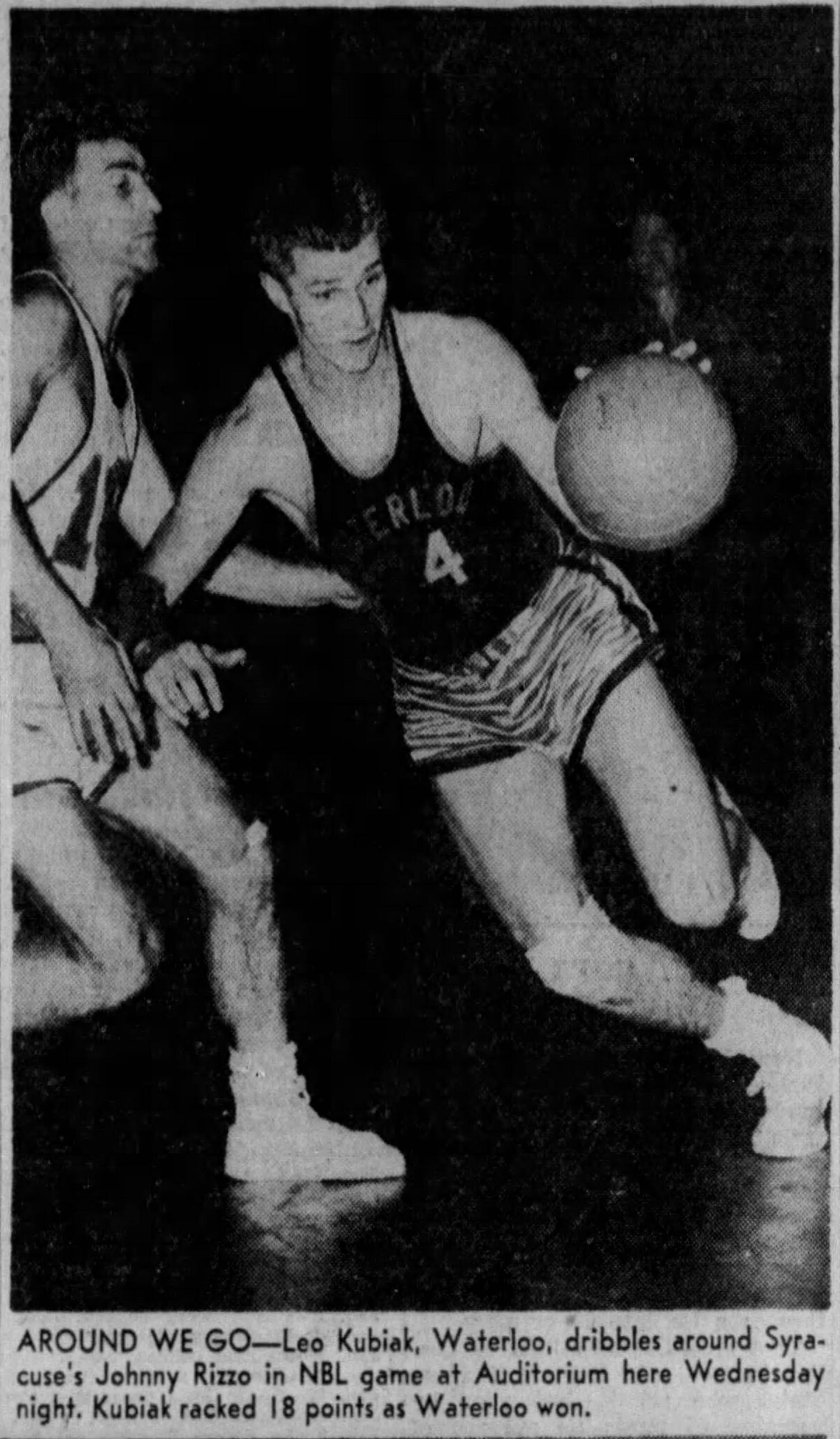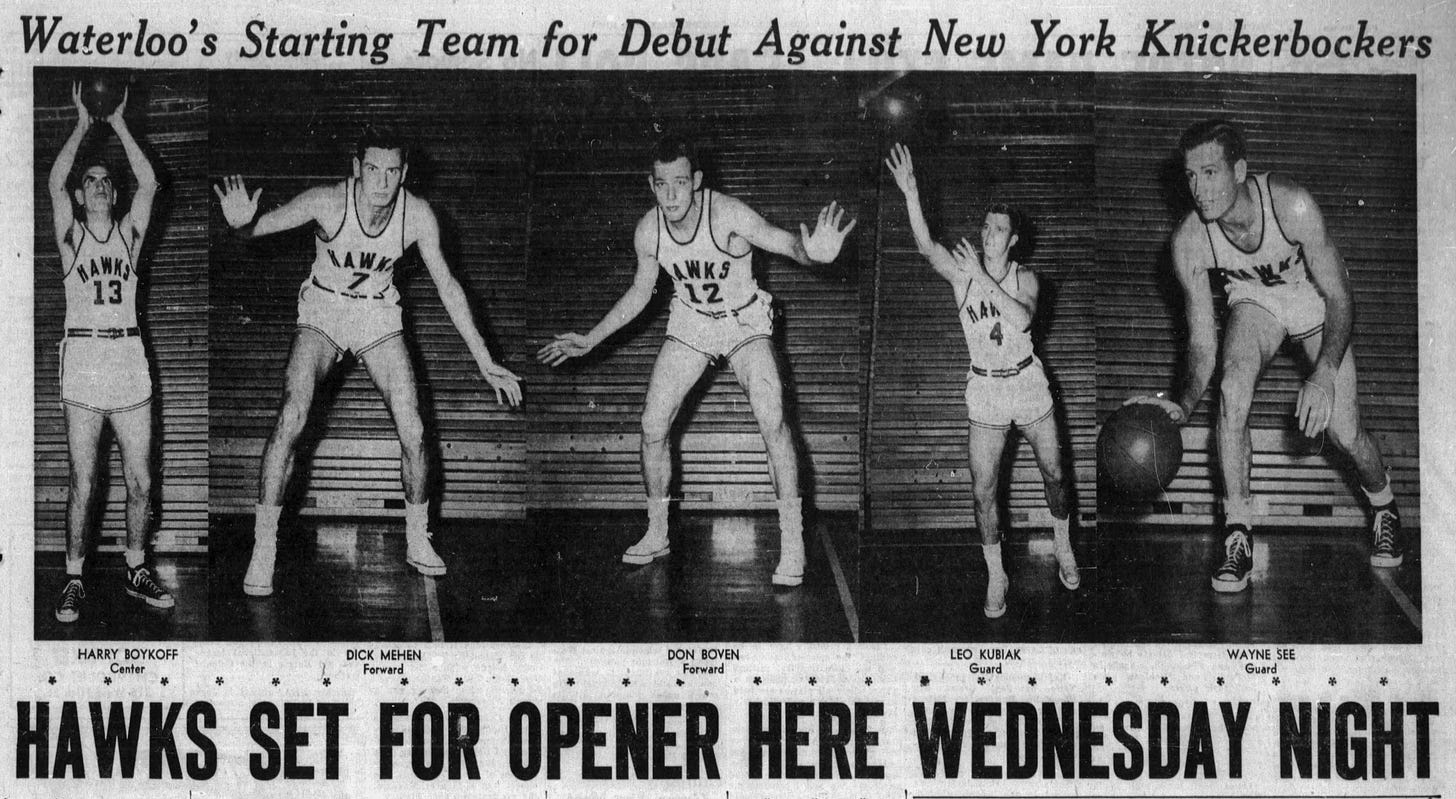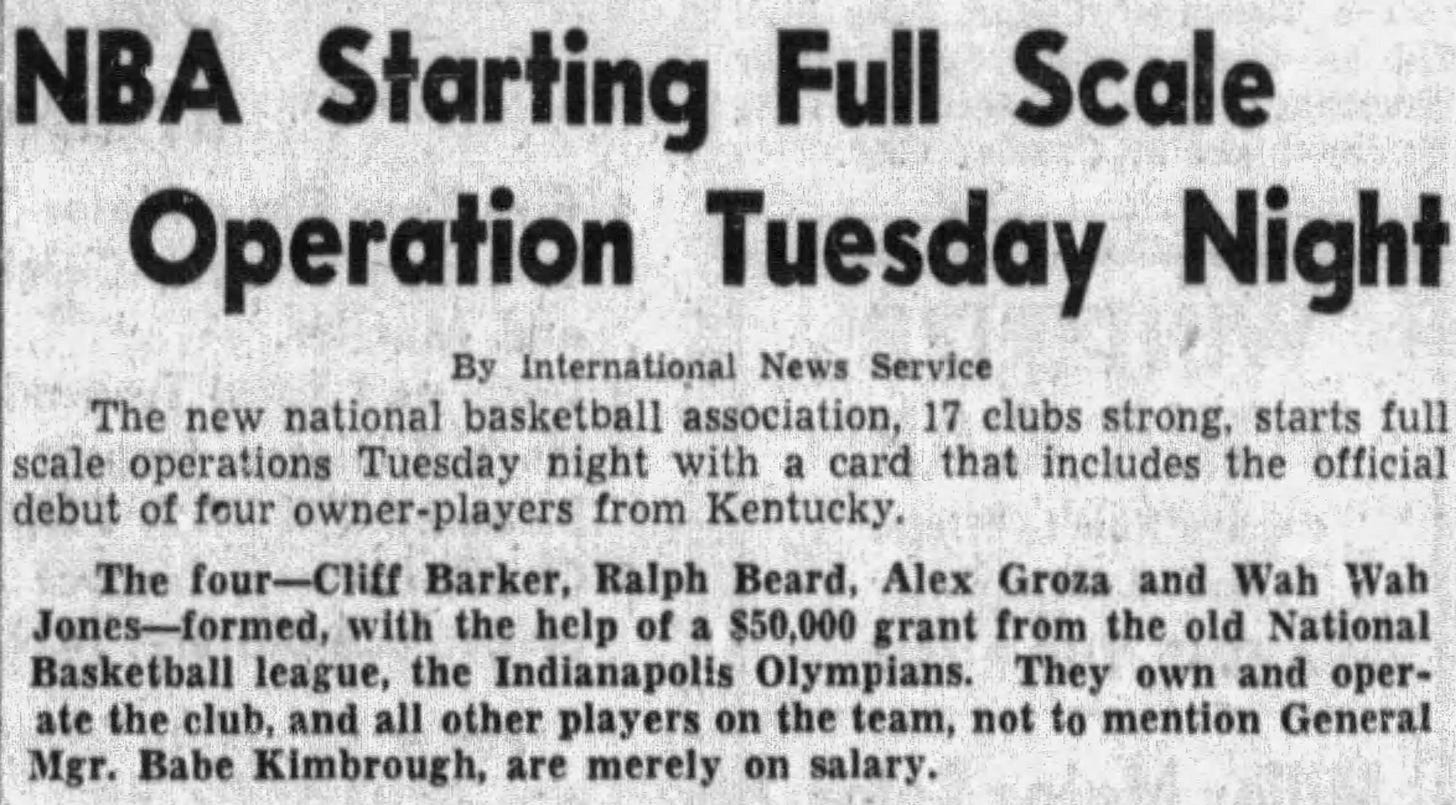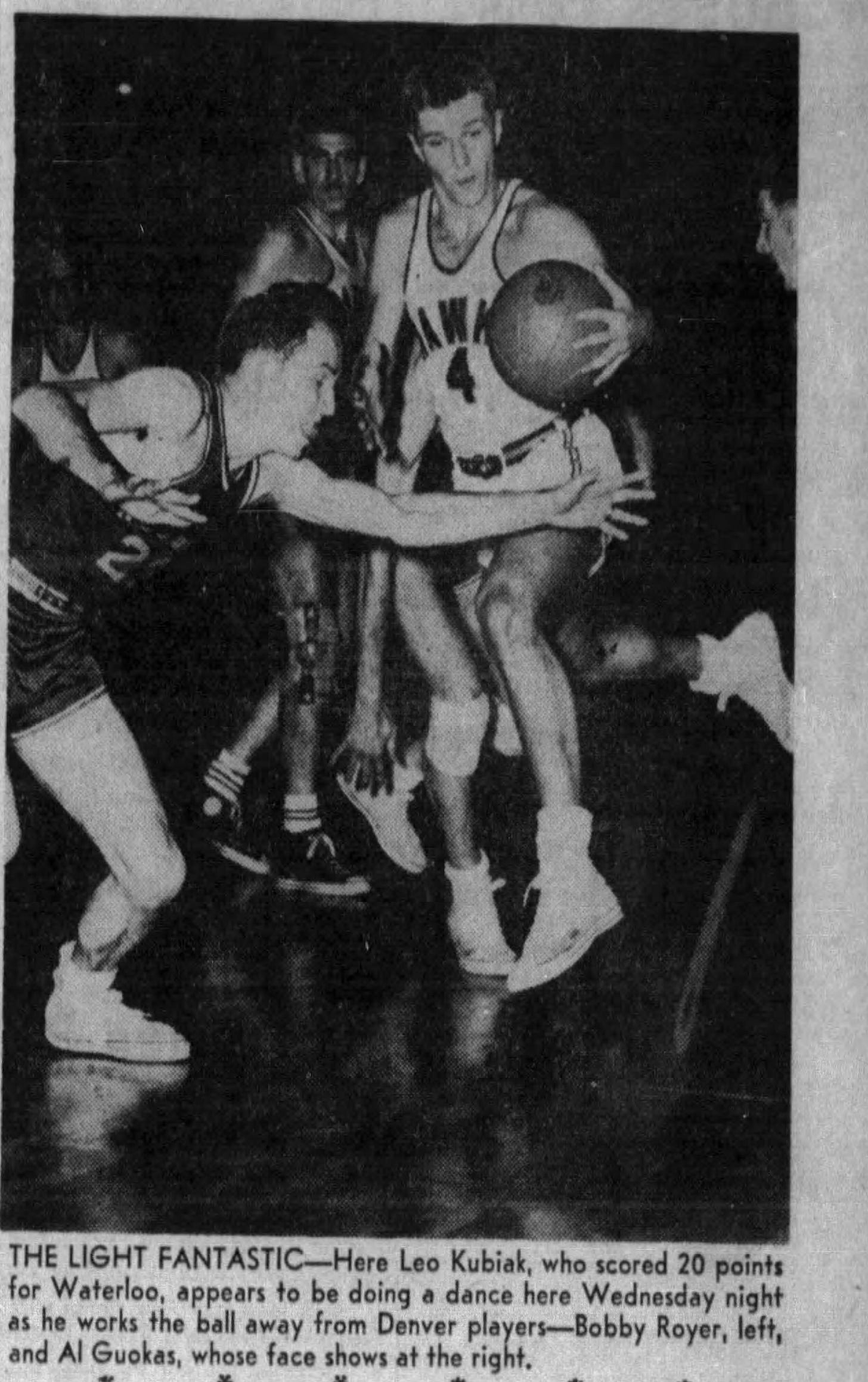NBA's 72 "Greatest" Moments: Leo Kubiak and the NBA's First Christmas
This qualifies as one of the 72 “Greatest” Moments in NBA History
December 25, 2021, will be hailed by the NBA as its 75th anniversary Christmas. You and I know that’s bullocks. The first NBA Christmas was in 1949, not 1946, so the 75th anniversary Christmas will be in 2024. See you then for the festivities.
But this Christmas… wait, cue the Donny Hathaway…
*ahem*
but THIS CHRISTMAS, we here at ProHoopHistory would like to remember the actual first NBA Christmas and also celebrate an NBA Christmas baby who played during that first NBA Yuletide.
That Xmas baby is Leo Kubiak, who turns 94 years old today. Kubiak was born and rasied in Akron, Ohio, a hotbed of mid-20th century basketball. Kubiak then attended Bowling Green State University. Upon completing college in 1948, Kubiak was drafted by the Waterloo Hawks of the National Basketball League and by the Rochester Royals, who had just jumped from the NBL to the Basketball Association of America.
Kubiak went with the Hawks and the NBL.
Standing only 5’11”, Kubiak had the distinction of being one of the first pro players to adopt the jump shot. Helped a short fella like him rise above opponents for scoring opportunities in a way the set-shot never would. He was also known for being a fleet-foot dribbler and ballhawking defender.
Little Leo’s Hawks had a respectable 30-32 record in their first full season of operation, 1948-49, which also happened to be the finale of the NBL. That summer the NBL and BAA buried their hatchet and merged forming the NBA. That meant the year-old Hawks would be moving to the NBA.
The nearby Tri-Cities Blackhawks inaugurated the NBA on October 29, 1949, and the Waterloo Hawks got their first NBA game in just a few days later on November 2 against the New York Knicks.
Imagine a world where Iowa had TWO NBA teams. That’s the early NBA for you.
Speaking of the early NBA, that Nov. 1, 1949, edition of The Waterloo Courier noted, for the record, that the NBA was brand new in 1949 and also highlighted the player-owned Indianapolis Olympians.
Imagine a world where NBA players owned their team. That’s the early NBA for you.
The Hawks lost their home opener against the Knicks, 68-60, but Kubiak was second on the team with 11 points. Their next game, Waterloo stomped the Boston Celtics, 80-66. And then beat the old Denver Nuggets, 80-65.
In that Nuggets game, Kubiak was on fire making 8-9 FGAs and all four free throws.
But that 2-1 record was the high mark for the Hawks. They’d lose six games in a row setting their season on a course of futility. At the end of the year, they were a lousy 19-43.
Immediately following the season, the NBA wanted to rid itself of small towns like Waterloo, Iowa. Tim Harwood, in his amazing book Ball Hawks, which you should all buy right now, documented the cabal.
NBA president Maurice Podoloff explicitly singled out Waterloo, Sheboygan, and Denver as three cities the NBA did not want in the league. Knowing the small cities were financially stable enough to survive another year at least, but not stable enough to bear an unexpected financial burden, the NBA suddenly insisted on a $50,000 “performance guarantee”.
That is, each franchise had to put up a $50,000 bond to the league. And this notice was put out just two weeks prior to the league’s meetings on April 24 and 25, 1950. That would constitute an unexpected financial burden!
Furthering the blatant attempt to oust the small towns, the big city Chicago Stags were heavily in debt, but were exempted from the performance guarantee bond. And were even given financial assistance from the NBA to stay afloat.
Failure to pay the bond money was the perfect pretext for the NBA to remove Waterloo, Sheboygan, and Denver. The Anderson Packers also were dumped. Delightfully, though, the struggling Stags still folded that offseason as did the St. Louis Bombers, despite the NBA’s best attempts to keep them alive.
Anyhoo, the Hawks and some of their erstwhile NBA kin formed the ill-fated National Professional Basketball League (NBPL) which barely lasted the 1950-51 season. After that the franchise went belly up.
(FYI, the Atlanta Hawks are descended from the Tri-Cities Blackhawks not the Waterloo Hawks).
For his part, Kubiak had averaged 8.9 PPG in the NBPL; 11.5 PPG in the NBA; and 7.4 in the NBL. He was the only Waterloo player to appear in all three of those leagues making him the stalwart of Waterloo pro hoops.
Which brings us back to the first NBA Christmas, the purpose of this article.
On Christmas Day, 1949, his 22nd birthday, young stalwart Leo Kubiak and his Hawks got a rare win over the Indianapolis Olympians. Their contest was merely one of seven that first NBA Christmas, but it was definitely the most thrilling.
(Yes, the Philadelphia Warriors beat the Baltimore Bullets 64-63, but Joe Fulks shot 1-19 from the field. Yikes.)
Sadly, we don’t have full play-by-play details, but Waterloo got the win, 97-93, in overtime. I wish we had those details, and of course film, because it wasn’t just an overtime win, it was a huge comeback victory!
Waterloo trailed 84-72 with just 58 seconds left in regulation. It’s hard nowadays to blow a 12-point lead with a minute left. And we have the three-point line. And the shot clock. They had neither of those things in 1949, so Indianapolis had one heckuva choke job and Waterloo musta busted their ass for this win.
Birthday boy Kubiak was nearly perfect from the foul line (9-10) and he also made three field goals en route to 15 points in the win.
So here’s to Leo Kubiak.
Hope he’s having a wonderful 94th birthday this Christmas and I wish the NBA would bother to acknowledge his birthday performance on their first Christmas way back in 1949.






